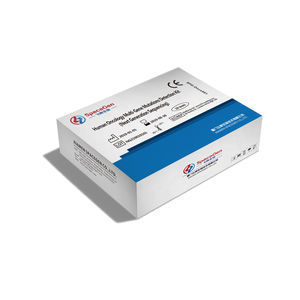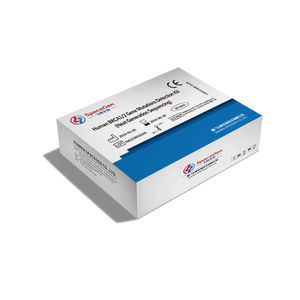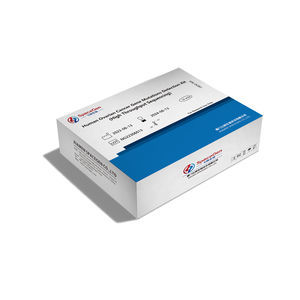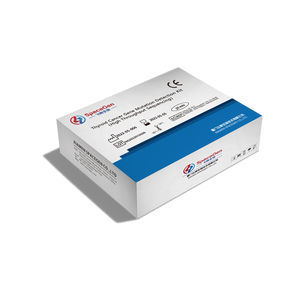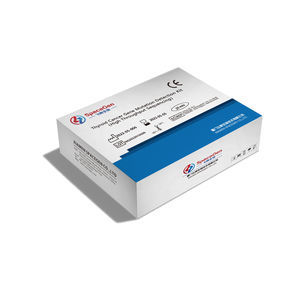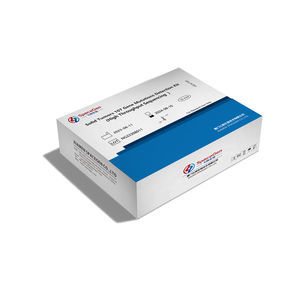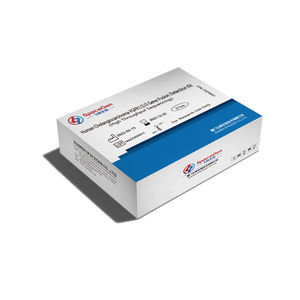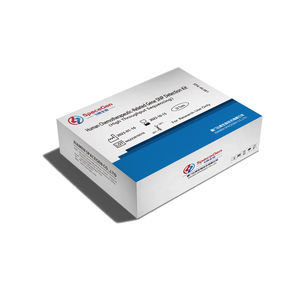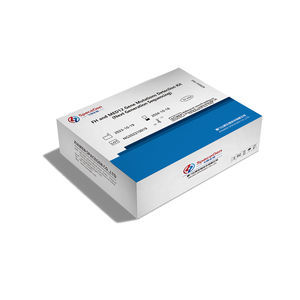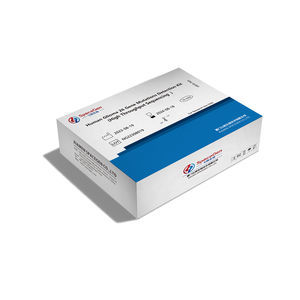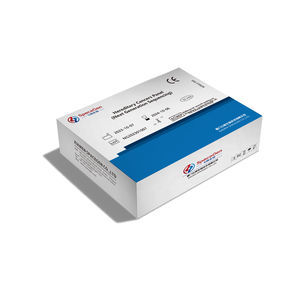

- Company
- Products
- Catalogs
- News & Trends
- Exhibitions
Colon cancer detection kit Typesen®for endometrial canceroncologyEPCAM
Add to favorites
Compare this product
Characteristics
- Applications
- colon cancer, for endometrial cancer
- Application field
- oncology
- Tested parameter
- EPCAM, PMS2, genetic, for PIK3CA Gene, for CTNNB1 gene, for MLH1 gene, for MSH2 gene, for MSH6 gene, for PTEN gene, for TP53 gene
- Sample type
- tissue
- Analysis mode
- molecular
- Result display time
4 h
Description
Endometrial Carcinoma is the most common malignant tumor of the female reproductive system in developed countries.Factors related to endometrial cancer: 1. Obesity> 23kg of normal weight, the risk increases by 10 times; 2. Women who have not given birth and infertility;3. Patients with functional ovarian tumors (granulocytoma); 4. Long-term use of females hormones; 5. Genetic factors, family history of colon cancer (lynch syndrome).
In 2013,The Cancer Genome Atlas (TCGA) studied 373 cases of Endometrial Carcinoma, Using genomics , transcriptomics and proteomics methods, by analyzing mutation spectrum, microsatellite instability (MSI), somatic cell copy Number changes (SCNAs), etc. TCGA divided Endometrial Carcinoma into four categories:(1)POLE ultramutated. (2) microsatellite instability-High(MSI-H) (3) copy number low(CN-L). (4)copy number high (CN-H).
DETECTION ITEM
The test kit detect 12 genes (POLE, TP53, MLH1, MSH2 , PMS2, MSH6, EPCAM, PTEN, KRAS, CTNNB1, PIK3CA, HER2) and MSI, related to the molecular classification of Endometrial Carcinoma.
DETECTION SIGNIFICANCE
POLE Ultramutated
If the surgical stage is I/II,observation is preferred.
MSI-H
Intermediate prognosis, sensitive to treatment with immune checkpoint inhibitors,
but current evidence is limited to advanced and recurrent cases. It is helpful for the
screening of Lynch syndrome.
Copy Number Low
(CN-L)
Intermediate prognosis, better outcomes in patients who recieved fertility-sparing
therapy and are simultaneously with progesterone receptor–positive.
Copy Number High
(CN-H)
Unfavorable prognosis, requires intensified adjuvant treatment, highly significant benefit from CTRT.
Catalogs
No catalogs are available for this product.
See all of SPACEGEN‘s catalogsRelated Searches
- Assay kit
- Blood assay kit
- Immunoassay assay kit
- Plasma assay kit
- Infectious disease detection kit
- Analysis software
- Molecular test kit
- Respiratory infection test kit
- Whole blood detection kit
- Optical assay kit
- Clinical assay kit
- Fluorescence assay kit
- Viewer software
- Real-time PCR test kit
- Research assay kit
- Laboratory software
- Windows software
- Laboratory detection kit
- Cell assay kit
- Oncology test kit
*Prices are pre-tax. They exclude delivery charges and customs duties and do not include additional charges for installation or activation options. Prices are indicative only and may vary by country, with changes to the cost of raw materials and exchange rates.

